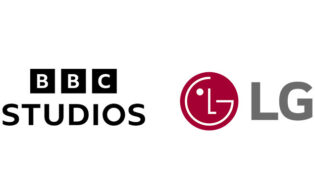Haymi Behar, chief marketing and digital officer at SPI International, told FAST Festival delegates about how the CANAL+ Group-owned company is tapping into its long history of operating pay-TV channels as it expands into the FAST space.
Behar took part in a keynote conversation with World Screen’s Kristin Brzoznowski as day one of the FAST Festival kicked off today. You can view that session here.
The keynote began with Behar offering his perspectives on how the TV viewing experience has evolved. “I believe the future of the TV experience will be a hybrid; it will be a combination of a vast VOD selection with a lot of verticals and genres as well as linear,” Behar explained. “Linear has two major advantages. One is live TV, and the second is the [channel surfing] experience. The [channel surfing] experience creates a unique discoverability option for content. People do the curation for you, so you can serendipitously move between different channels based on the content you like to watch. The lean-back approach, which is the live TV approach, will always live with us, mainly because of news and live sports events, as well as new types of channels such as FAST channels and the Smart Channels that SPI has introduced with FilmBox+.”
Ad dollars are increasingly crucial to streaming platforms, Behar noted. “I think the future of TV and digital streaming is moving toward grabbing more of those ad dollars. That’s where FAST channels and AVOD are also coming in for the streamers.”
The SPI International FAST slate includes Filmstream, an arthouse movie service; Dramastream, offering series; Docustream, a documentary channel; and Fashionstream. It also provides a slate of Smart Channels exclusive to the FilmBox+ platform.
“Smart Channels are an innovative way of offering our content to our viewers and operators,” Behar said. “They have already launched in millions of homes worldwide, focusing on operators in Central and Eastern Europe, the Netherlands and other countries. We have around 200 Smart Channels, which are digitally curated streaming channels. You can think of it like a playlist on a music streaming app. SPI has around 14,000 pieces of content in its library. It would be an incredible amount of wasted time for a consumer to go through all this content to find something to watch. So, we categorize and recommend content, but we also wanted to tap into the lean-back approach. FilmBox+, which is integrated already with around 50 operators across Europe, is offering linear channels and VOD content together in a hybrid model that you can subscribe to directly or through your subscription with your operators. The app is integrated with operators’ apps and smart TVs.”
Behar noted that the Smart Channels product within FilmBox+ “makes discoverability much easier.” And the strategy is working, he said. “Almost 20 percent of our app viewership now comes from Smart Channels.”
Behar then discussed how FAST channels can help solve the challenge of discoverability today. “We realized that people are experiencing choice fatigue. When it comes to entertainment, we prefer that somebody makes those choices for us. Our research shows that almost 50 percent of the viewers in the Netherlands in 2022, once they could not find something to watch, gave up completely (women more so than men). They spend half an hour—a quarter or a third of the time they have for the evening to watch something—searching for something. When we established that choice fatigue is a real issue, we started promoting our linear channels more because they’re curated and designed to allow people to enjoy the content. Once you are in our apps, browsing through the channels and stumble upon a movie or show that you like, maybe it’s in the middle of it; you can always just press a button to watch it from the beginning within the app. Browsing through the EPG, you can see what’s coming next. It’s a combined experience of lean-back and lean-forward approaches, linear channel and VOD—a ‘press and play’ that tries to offer more choice to the viewer so that they can just focus on enjoying the content rather than trying to make another choice.”
Human curation is “almost everything,” Behar explained. “When you leave the curation to machines, the algorithms will always show you something based on your past. Curation is based on data of viewers’ choices and also on certain occasions. Seasonality is important, and current events are important. Curation is key, and it [is backed by] years of TV building experience. As a traditional pay-TV broadcaster worldwide, SPI is now applying this know-how to our digital apps and offering it through operators.”
Behar firmly believes that AVOD will continue to grow as ad dollars migrate to streaming platforms. “People don’t mind seeing some ads before watching content if they’re going to pay less or pay nothing to watch the content or if the ad is somewhat relevant. That’s where the challenge for FAST channels is. FAST platforms are not yet able to supply the data necessary for the advertisers to spend more. In a typical ad marketer’s mind, 70 percent of their budget will be spent on traditional means where they are sure the return on investment is guaranteed. This could be digital advertising, out-of-home or traditional TV. Around 20 percent will go to newer advertising methods, such as influencers, Twitch, blogs, Reddit, etc., depending on the country. Then, 10 percent will go to the completely experimental new media. FASTs have not yet demonstrated their effectiveness as a viable platform for maximizing advertising investments and deriving significant benefits from that major part of the budget. FAST channels have yet to reach that point. This is where streaming services such as FilmBox+ hold an advantage. We know who our subscribers are and what they are watching. We don’t have to supply this data to the advertisers, but we can create clusters of target groups so the advertisers will reach the audience they want.”






